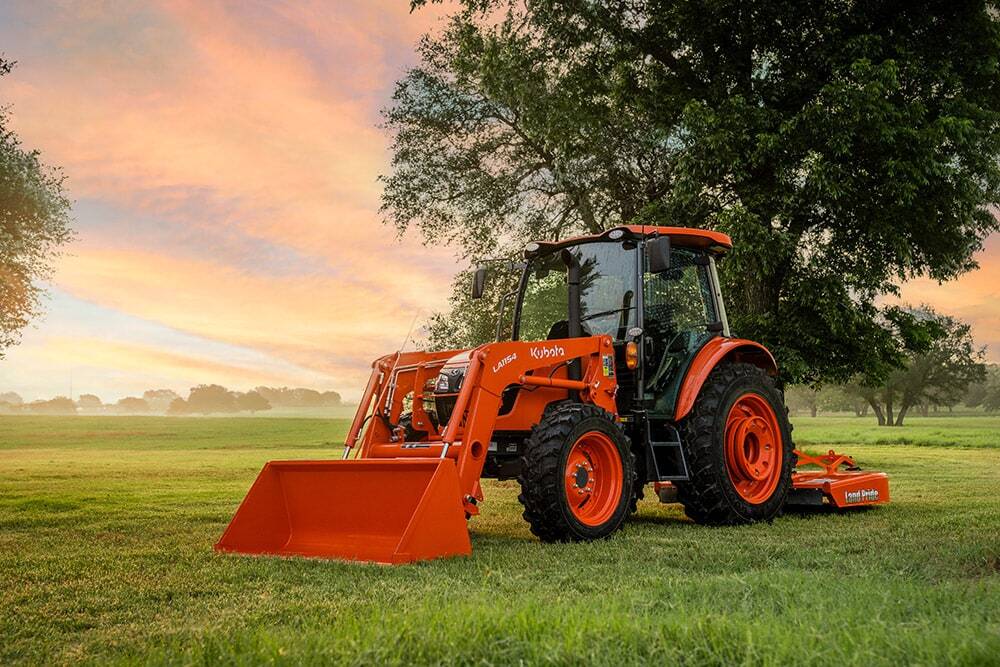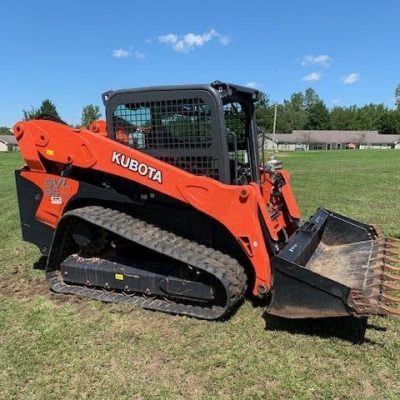Your Complete Guide to Buying Used Kubota L Series Tractors
Are you considering investing in a used Kubota L Series tractor? Smart choice. These compact utility tractors have earned their reputation as reliable workhorses that deliver exceptional value for farmers, landscapers, and property owners alike.
The Kubota L Series has dominated the compact tractor market for decades, and for good reason. These machines offer the perfect balance of power, versatility, and fuel efficiency, making them ideal for everything from mowing large properties to handling serious agricultural tasks. But here’s the thing—buying used equipment requires careful evaluation to ensure you’re getting a machine that will serve you well for years to come.
This comprehensive guide will walk you through the essential steps for purchasing a used Kubota L Series tractor. You’ll learn how to identify your specific needs, conduct thorough inspections, and negotiate the best deal possible. By the end, you’ll have the confidence to make an informed purchase that delivers real results for your operation.
Understanding the Kubota L Series: Why These Tractors Lead the Market
The Kubota L Series encompasses a range of compact utility tractors typically ranging from 24 to 47 horsepower. What sets these machines apart from competitors is their exceptional build quality, user-friendly design, and impressive resale value retention.
These tractors feature Kubota’s renowned diesel engines that are known for their longevity and fuel efficiency. The hydrostatic transmission system ensures smooth and intuitive operation, even for novice operators. Plus, the extensive dealer network ensures parts availability and service support nationwide.
Popular models in the L Series include the L2501, L3301, L3901, and L4701. Each model offers different horsepower ratings and feature sets, allowing you to choose the perfect match for your specific applications.
Step 1: Research and Identify Your Specific Needs
Before you start shopping, you need to clearly define what you expect from your tractor. Are you planning to use it primarily for mowing? Do you need it for loader work, grading, or heavy-duty agricultural tasks?
Determine Your Power Requirements
Consider the implements you’ll be running and the terrain you’ll be working on. A 25-horsepower L2501 might be perfect for basic mowing and light loader work, but if you’re planning to run a rotary cutter through thick brush or handle heavy materials, you’ll want to step up to a more powerful model like the L3901 or L4701.
Evaluate Your Budget Range
Used Kubota L Series tractors typically hold their value well, so expect to pay anywhere from $15,000 to $35,000 depending on the model, age, and condition. Set a realistic budget that includes not just the purchase price, but also potential repairs, implements, and ongoing maintenance costs.
Consider Your Long-Term Plans
Will your needs change over the next five years? It’s often more cost-effective to buy a slightly more powerful tractor than you currently need rather than having to upgrade later. The versatility of the L Series means you can grow into additional capabilities as your operation expands.
Step 2: Inspect the Engine and Transmission for Critical Wear Signs
The engine is the heart of any tractor, and the transmission is what puts that power to work. These components represent the highest potential repair costs, so your inspection here is crucial.
Engine Inspection Checklist
Start your inspection with the engine cold. Check the oil level and condition—clean, amber-colored oil suggests good maintenance habits, while black, sludgy oil raises red flags. Look for any signs of oil leaks around the engine block, oil pan, and valve covers.
Listen carefully to the engine during startup. A healthy Kubota diesel should start quickly and run smoothly without excessive smoke or unusual noises. Blue smoke indicates oil burning, while white smoke could signal coolant issues. Black smoke suggests fuel system problems.
Check the coolant level and condition. The coolant should be clear and free of rust or debris. Rusty coolant or low levels might indicate cooling system neglect or potential head gasket issues.
Transmission and Hydraulic Assessment
Test the hydrostatic transmission by operating the tractor forward and reverse at various speeds. The transmission should respond smoothly without jerking, slipping, or unusual noises. Any hesitation or grinding sounds warrant further investigation.
Pay attention to how the tractor handles under load. If possible, engage the PTO and run an implementation to test the transmission’s performance under working conditions.
Step 3: Thoroughly Check Hydraulics and Electrical Systems
The hydraulic system powers your loader, implements, and other attachments. Electrical problems can be expensive to diagnose and repair, making these systems critical evaluation points.
Hydraulic System Evaluation
Inspect all hydraulic hoses and connections for signs of leakage, cracking, or damage. Even small leaks can indicate worn seals or connections that will require attention. Check the hydraulic fluid level and condition—clean, red fluid is ideal, while dark or contaminated fluid suggests maintenance issues.
Test the loader operation if equipped. The loader should lift and lower smoothly with good speed and power. Cylinders should hold their position without drifting when the controls are in neutral.
Operate the three-point hitch through its full range of motion. The hitch should raise and lower smoothly and hold implements securely at any position.
Electrical System Assessment
Check all lights, gauges, and electrical accessories. Non-functioning gauges can indicate electrical problems or sensor failures. Test the charging system—the battery should maintain proper voltage during operation.
Inspect the wiring harness for damage, especially around moving parts and areas exposed to weather. Rodent damage to wiring is common in stored tractors and can be expensive to repair.
Step 4: Review Maintenance Records and Service History
Maintenance records tell the story of how well the tractor has been cared for. A well-maintained Kubota L Series can easily provide 3,000+ hours of reliable service, while a neglected machine might require significant repairs much sooner.
What to Look For in Service Records
Request maintenance records showing regular oil changes, filter replacements, and scheduled services. Kubota recommends specific service intervals, and adherence to these schedules indicates responsible ownership.
Look for evidence of major repairs or component replacements. While some repairs are normal over a tractor’s life, patterns of repeated problems or recent major work might indicate underlying issues.
Understanding Hour Meter Readings
Hour meters on compact tractors can be misleading. A tractor with 500 hours used for heavy commercial work might show more wear than one with 1,000 hours used for light residential tasks. Consider the type of work performed and the maintenance quality, not just the hour count.
Verifying Ownership and Title
Ensure the seller has a clear title to the tractor. Check the serial number against the title and be cautious of any discrepancies. For financed equipment, verify that liens are properly handled during the sale.
Step 5: Master the Art of Negotiation and Purchase Finalization
Armed with your inspection findings and market research, you’re ready to negotiate the best possible deal. Remember, even minor issues you’ve discovered can be valuable negotiation points.
Developing Your Negotiation Strategy
Use any discovered issues as negotiation leverage. A hydraulic leak might cost $500 to repair, but you can often negotiate a $800-1,000 price reduction. Present your findings professionally and be prepared to walk away if the seller won’t meet your reasonable expectations.
Research comparable sales in your area to establish fair market value. Online marketplaces, dealer listings, and auction results provide good benchmarks for pricing negotiations.
Pre-Purchase Considerations
Consider having a qualified mechanic perform a pre-purchase inspection, especially for higher-value tractors. This investment can save thousands in unexpected repairs and provides additional negotiation leverage.
Factor in transportation costs if the tractor isn’t local. Professional transport can cost $3-5 per mile, which should be considered in your total acquisition cost.
Finalizing the Purchase
Once you’ve agreed on terms, ensure all paperwork is properly completed. This includes title transfer, bill of sale, and any warranty agreements. Take photos of the tractor’s condition and verify that all discussed accessories and implements are included.
Schedule pickup or delivery promptly to avoid storage fees or weather exposure. Plan for immediate needs like insurance, storage, and any urgent maintenance items identified during inspection.
Making Your Investment Pay Off: Next Steps After Purchase
Congratulations on your smart investment in a used Kubota L Series tractor! These machines are built to deliver years of reliable service when properly maintained and operated.
Your priority should be addressing any maintenance items identified during your inspection. Fresh fluids, filters, and minor repairs now will prevent major problems later. Establish a relationship with a qualified service provider who understands Kubota equipment.
Consider your implement needs and budget for attachments that will maximize your tractor’s productivity. The L Series accepts a wide range of implements, from mowers and loaders to specialized agricultural tools.
Ready to find the perfect used Kubota L Series tractor for your operation? Our team of equipment specialists can help you locate, inspect, and negotiate the best deals in your area. We understand what to look for and can guide you through every step of the purchasing process.
Don’t leave your investment to chance—contact us today for expert assistance in finding and evaluating your next Kubota tractor. Your operation deserves equipment that delivers results, and we’re here to make that happen.






